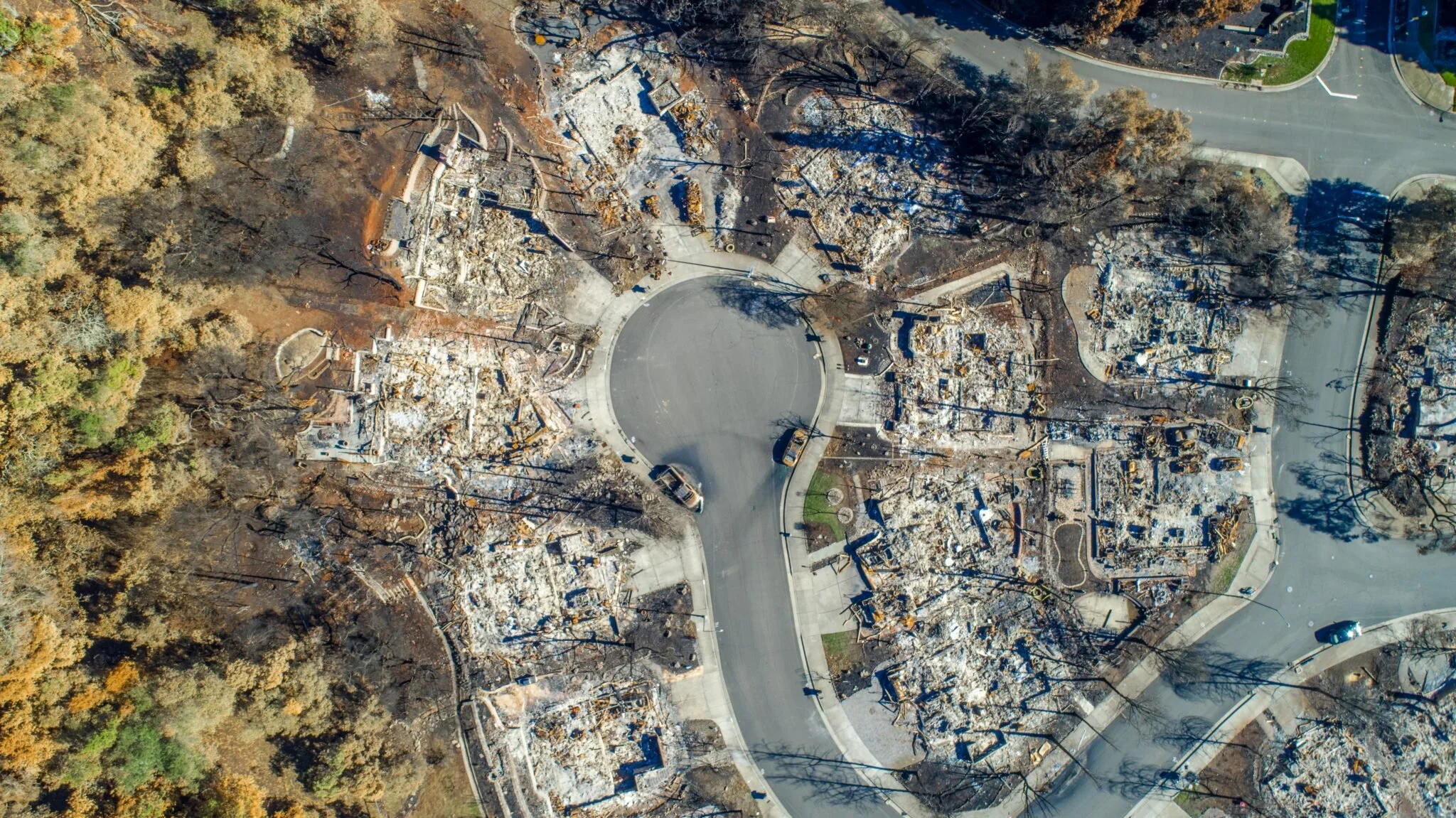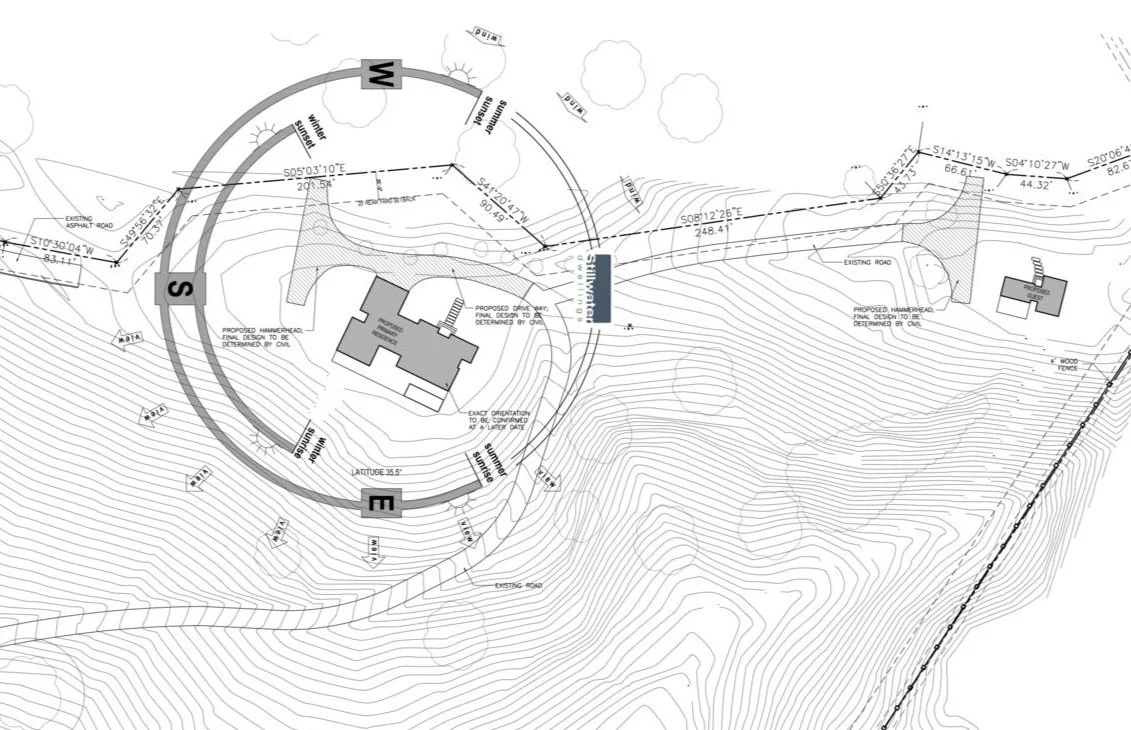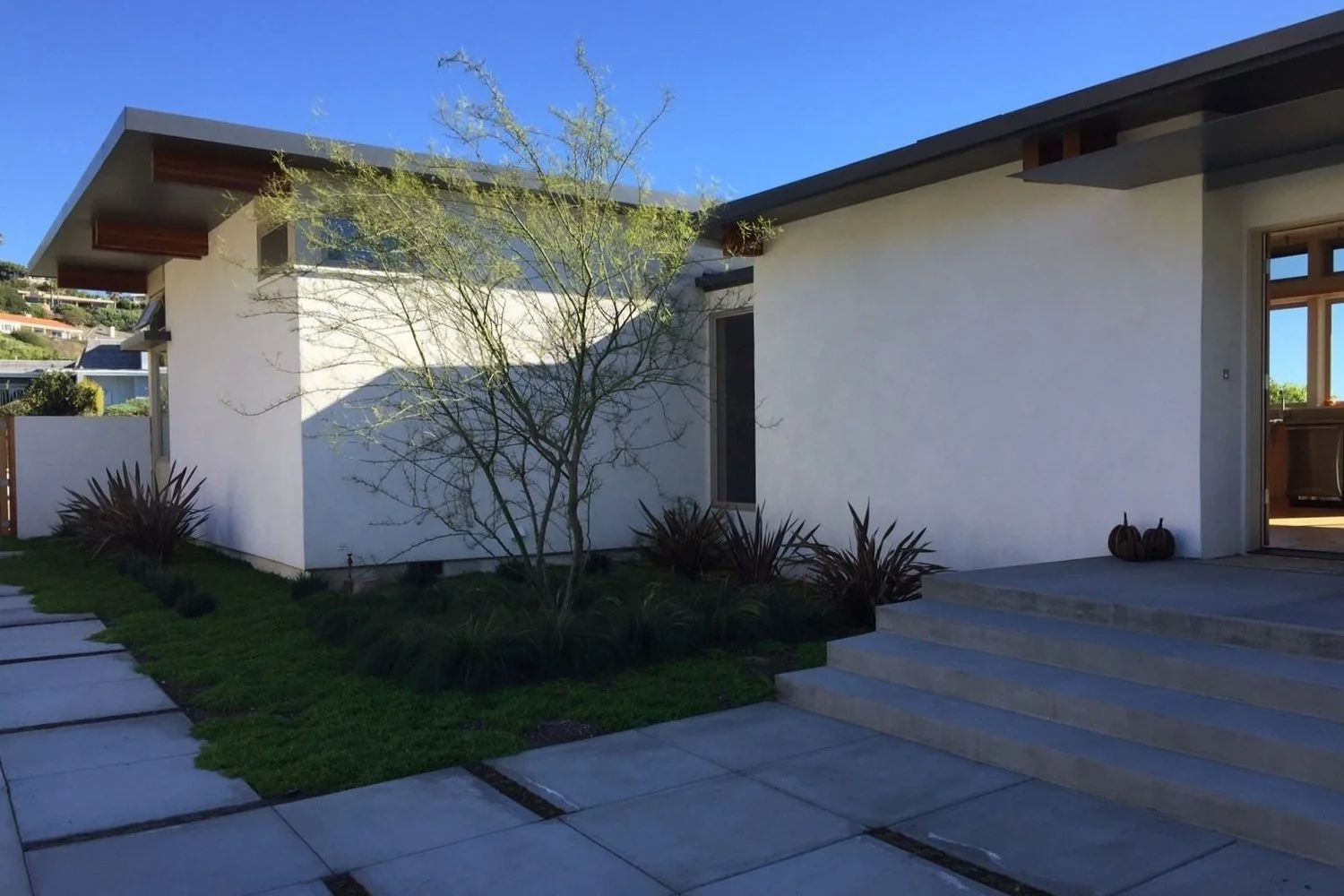Design & Build for wildfires areas
By Michael J. Kindzierski, Bachelors of Architecture, Construction Engineering Science
Owner/Director of Design, KINDO Studios; California Director of Architecture/Engineering/Construction Stillwater Dwellings
site planning: defensible space, brush clearing, hydrant at site, fire truck turnaround; Design materials: metal roof, cement board siding, cement board overhangs, sprinkler system,
As we have been designing and building our homes in fire hazard areas for years, completing fire rebuilds from last years fire and as we embark on assisting in the rebuild after the latest round of dangerous fires, our team utilize a few basic planning and architectural design decisions to greatly improve the chances that our homes will survive the next wildfires.
Fire Defense Planning
As we assist in fire rebuilds, our team utilizes a few basic planning and architectural strategies that greatly improve the chances that KINDO studios homes can survive future wildfires.
Souther California - Planning layout
Planning, Layout & Design
Site planning: Before basic floor plans come into play the initial planning strategy should be to create a buffer or defensible space of incombustible material around the home location. This buffer zone can be comprised of patios, driveways, or low-growing fire-retardant plants. Special attention should be paid to the potential for extremely dangerous up-slope running fire area. Site layout including driveways and turn-arounds that are wide enough to make it easy for firefighters to bring their heavy equipment in close to your home can also create this buffer.
Southern California - heavy timber
Structure
For extended fire rating think heavy timber.
Metal may provide an early ignition resistance but can also reach an earlier structural failure due to temperature. With the density of the heavy timber structure can provide and insulating property to allow longer structural integrity thus keeping your structural envelope secure for longer time periods.
San Ynez, CA - Metal roofing
Roofing
Ignition resistant roofing, like metal roofing, can be the front lines of prevention.
Both metal roofing and torched-down flat roofing provide Class A rating. Special attention should also be paid to the substate classification.
Dana Point, CA - Stucco exterior, cement board overhang & soffit
Cladding - Siding
Ember resistant exterior siding materials like cement board and stucco can be both preventative and be incorporated into various architectural styles.
Southern CA - fire rebuild: Cement board overhangs and soffits
Overhangs & Undersides
Special attention should be devoted to the design and materials on the underside of overhangs also referred to as soffits. This also applies to the under side of cantilevers, balconies, decks, and underfloor areas. These areas are where the flames will be trapped and temperatures will be the highest. (roof soffits, cantilevered balconies, decks, and underfloor areas) because here is where flames will be trapped and temperatures will be the highest. Provide fire resistant materials, protection enclosures and structural integrity to these locations.
Windsor, California Project - double & insulated tempered windows and doors
Windows & Doors
Windows are the weakest link in defending your building envelope, but there are several methods to strengthen these areas. Double glazed, insulated and tempered glass each add extra layers of defense. The mot secure options are concealed roll-down or side recessed metal fire doors with automatically fusible link closure. They will protect windows and sliding glass doors even if they are left standing open. Fold-down panels or shutters on sloped rails can also be designed to close and latch automatically. And the glass panels can be wire glass or fire safety glass that can stay intact even though cracked by the heat.
Doors with a metal core faced in your preferred material or solid wood doors are rated higher than hollow core wood doors. Garage doors are typically the largest opening into the home and pose a potential threat. Consider installing a metal panel door with an automatic fusible link closure. Detailed construction ensuring a tight fit to block the wildfire accompanying strong winds from blowing embers under the door is critical.
Outdoor Living
Concrete and paving stone patios not only add an element of modern beauty, they are also helpful in fire defense. Another material to consider is Ipe wood (also called Brazilian walnut) which is a very dense wood and is naturally resistant to fire. Railings, patios, covers and pergolas can also be made of Ipe wood or metal. Detailed construction ensuring a tight fit to block the wildfire accompanying strong winds from blowing embers is critical.
Emergency Power
Electrical power can be out for weeks or months during a fire. California power companies are now proactively turning off parts of the grid during high fire alert days or during strong winds to prevent knocked-down power lines from causing a fire. Considering both solar and emergency generator solutions can help keep you up and running when power lines are down or after your has home weathered the fires.
Solar Energy Management Solutions
KINDO studios works with you and our solar partners to design a solar solution from the very beginning stages of your project. Our goal is to provide you with all information about this element of your new home including timing and cost. We will help you find the ideal solutions that fits your needs while maintaining the aesthetics of your new home’s design.
Fire Suppression Systems
Many jurisdictions now require fire suppression systems such as sprinklers. These can tend to be unsightly, but with careful planning and innovations we help to minimize their visibility creating a safe space that is aesthetically pleasing. In some cases water tanks or fire hydrants may also be necessary.












